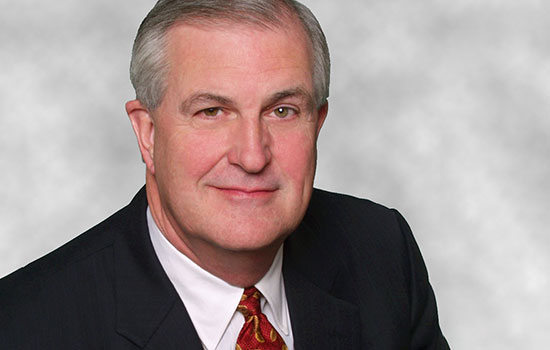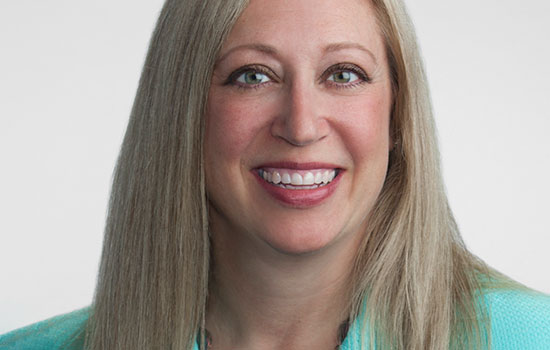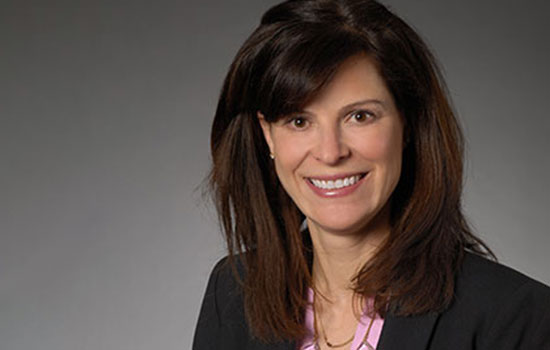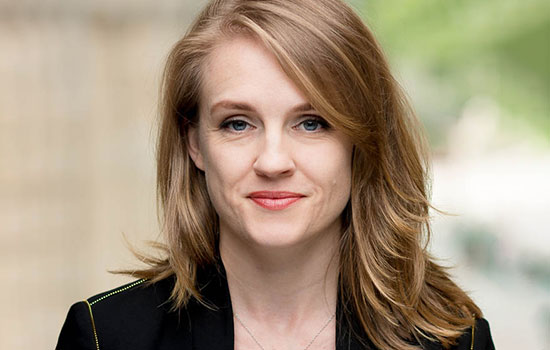
The new normal of the post-Great Recession legal world continues to take shape in Wisconsin and around the country, with trends in areas like law firm economics, client expectations, emerging practice areas, lawyer recruitment and retention, and marketing and business development that often go beyond the merely evolutionary.
Jim Jones, senior fellow and director of programs on trends in law practice at the Center on Ethics and the Legal Profession at Georgetown University Law Center, remembers a conference speaker who made the point that human organizations go through long periods with a working model that everybody tinkers with to try to improve.
“Then, from time to time, revolutionary change happens, and a whole new model comes into place. It takes time for people to recognize that model has changed, and for a time, people continue to try to improve the old model,” he says. “A few outliers say, ‘We’re dealing in a whole new world.’ We think we’re probably at one of those turning points right now.”
As such, especially sandwiched between competition from both the Big Four financial services behemoths and online legal services providers, firms and lawyers should be challenging their traditional assumptions and business models, according to the “2019 Report on the State of the Legal Market” released by Georgetown and the Thomson Reuters Legal Executive Institute.
Overall Economics
That advice and overall thrust does not appear likely to change in the 2020 report, Jones says, adding that he expected law firms to have had a “decent” year in 2019 but not as successful overall as 2018 – and that firm revenues would be up more than demand.
“Demand is up a little bit, but demand is one of those troubling areas that has remained stagnant” since at least 2012, Jones says. “They’ve had pretty aggressive raises this year, not quite as aggressive as in 2018, but up in the 4 to 4.5 percent range. That’s still a lot lower than before 2007.”
The Georgetown-Thomson Reuters research also has shown that firms are doing better overall on collections, with realization rates remaining steady at between 84 percent and 88 percent depending on the practice area, after a period of decline, Jones says. Expenses are also “creeping up,” due at least in part to increases in associate salaries.
Probably the worst news that Jones sees is that productivity continues to decline, by probably 1 to 1.5 percent in 2019, because firms are adding lawyers more quickly than legal matters. “If I were to characterize the overall performance of the market, it’s essentially a period of relative stagnation in which firms have managed to do what they needed to do in terms of growing profitability for partners,” he says. “But they’ve needed to pull a lot of switches to do that.”
One of those “switches” has been slower growth, and in some cases reduced size, of equity partner headcount, Jones says. “We’re seeing more and more lawyers in different kinds of positions – more associates, more nonequity partners, more lawyers given all kinds of specialty titles,” he says. “They’ve managed to hold profits per partner where they needed to be – by that I mean, to avoid people leaving. It’s an exaggeration to say most firms, or even a majority of firms, are doing exceptionally well.”

Law firms need to realize that clients are moving toward an integrated services model in which they don’t see legal problems or business problems – they just see problems, period. As such, they’re asking outside counsel to work with not only their in-house departments but also people from other … service providers. – Jim Jones, Center on Ethics and the Legal Profession, Georgetown University Law Center
Shifts in the Market
Flat demand for law firms does not mean that demand for legal services is flat, Jones says. “It’s an anomaly that over the same number of years demand has been stagnant, we have seen increases in corporate spend for legal services,” he says. “What’s happening to that money?” Some is staying in-house as more routine matters are kept there, he adds, while other funds are going toward the Big 4, legal process outsourcing firms, or legal placement management firms.
Based on a global survey by Thomson Reuters and Oxford University, Jones says the overall size of the alternative service provider market is more than $10 billion – small compared to the total legal services market, but growing year over year at more than 20 percent. “These are all services that law firms used to provide,” he says. “They charged a lot more for them than these ASPs are charging for them. … We were charging for associates to do all this work.”
Law firms also need to realize that clients are moving toward an integrated services model in which they don’t see legal problems or business problems – they just see problems, period. As such, they’re asking outside counsel to work with not only their in-house departments but also people from other law firms, and even accountants and other service providers, Jones says.
He remembers talking a few years ago with a litigation partner in a well-heeled New York City firm who told him that in well over half the litigation matters in which he was involved, he was the only lawyer from his firm. “I’m part of virtual teams with partners from other firms, accountants, business consultants, with a high emphasis on increasing the use of technology to make work more efficient and cost effective,” he told Jones. Firms will need to accept those shifts or “hemorrhage business to other providers,” Jones adds.
The “2019 Legal Trends Report” from Clio notes the same paradox that Jones speaks of, with lawyers and firms struggling to maintain business while clients scuffle to find representation – or forego it entirely. The fastest-growing firms achieved their performance with an average increase in lawyers’ utilization rates from 28 percent to 32 percent in the past five years, which doesn’t seem like more than an incremental gain, but it has resulted in revenue growth of more than 100 percent, says George Psiharis, chief operating officer at Clio.
That’s largely because firms were able to handle more work – more clients and for more hours – with the same numbers of attorneys, essentially by working smarter, Psiharis says. “They were more efficient in their work process but also had a really thought-out client experience component to their journey, especially in that initial inquiry stage,” he says. “If practitioners can make use of high-bandwidth face time with clients, they’re more likely to be satisfied. We realize it can’t be done in person all the time.”
The fact that utilization rates hover around 30 percent surprises some in the legal industry, but solo practices and small firms are often busy with other aspects of the practice, while others just don’t have enough work. Psiharis believes keeping track of those rates is a good first step. “Not many people are trained or conditioned to think about their firm that way – understanding that incremental improvements drive disproportionate impacts,” he says.
Realization rate is another important success metric, with the most successful firms reaching 90 percent, in part by avoiding the sticker shock of sudden rate increases, Psiharis says. While hourly rates are increasing overall for attorneys, they’re tied pretty directly to the consumer price index; for nonattorneys, they’re pretty flat, he says. And then firms need to track collection rates, which tend to be higher if firms allow electronic payments, he says.
Firms in Wisconsin tend to have somewhat lower hourly rates and higher realization rates than the national average, according to Clio’s state-by-state breakdown. Firms had an average hourly rate of $205, lawyers $214, and nonlawyers $151; adjusted for cost of living, those figures were a bit higher, at $220, $229, and $162, respectively. Utilization rates were 36 percent for lawyers and 23 percent for nonlawyers, while realization rates hit 81 percent and collection rates 88 percent in the state.

The use of e-billing has a major impact on clients’ confidence in a firm’s transparency because they can better access and analyze how they’re spending and how they can better manage their matters. While specific client requirements might have changes, however, what they want from law firms is much the same. – Marcie Borgal Shunk, The Tilt Institute
Measuring Profitability
Law firms overall are beginning to reevaluate how they measure profitability, with the traditional quarterly revenue-per-equity-partner a useful but not necessarily optimal metric, says Marcie Borgal Shunk, president and founder of The Tilt Institute. The Tilt Institute counsels law firms on practice management and profitability matters.
“There’s a lot more conversation about how to measure profitability within the law firm and, more importantly, how to then roll that out and measure performance against profitability, and consider how that fits into the suite of metrics firms are using,” she says. “We’re moving in the right direction, but we’re a far cry from other industries.”
Borgal Shunk puts realization rates overall in the low- to mid-80s, and holding steady as opposed to declining as they did for most of the 2010s. Hourly billing rates are increasing modestly, which means the overall impact is positive. The prevalence of alternative fee arrangements has held steady at 20–25 percent of the market among larger organizations. “I wish it were more of a major trend,” she says. “That number is smaller when you get into the middle market. There are certainly companies and practice areas that tend to be more likely to utilize alternative fee arrangements,” including intellectual property and contracts in general.

The fastest-growing firms achieved their performance with an average increase in lawyers’ utilization rates from 28 percent to 32 percent in the past five years, which doesn’t seem like more than an incremental gain but it has resulted in revenue growth of more than 100 percent. – George Psiharis, Clio
Client Expectations: Missing the Mark
To test how well firms are performing vis-à-vis client expectations, Clio sent inquiries to more than 1,000 law firms, and more than 60 percent never responded, Psiharis says. “That lined up with how clients self-reported their experiences trying to find a law firm,” he says. And few of the responses they did receive “were at a level we considered to be excellent.”
A companion survey of 2,000 consumers found that most clients expect responses within 24 hours, and that they wanted to learn, in a transparent way, how the engagement would proceed. “The vast, vast majority of responses via email – less so by phone – missed the mark. And those would be the people who responded – a minority,” Psiharis says.
About 85 percent of the revenue that flows through Clio’s product is tied to hourly billing, he says, and those who attempted to raise their rates faster than the speed of inflation did not necessarily raise their revenues; that was linked more closely to utilization rates. “Client expectations are changing,” he adds. “The way people are used to shopping for things and doing business is getting overhauled. When folks bring those expectations to law, they have a pretty jarring experience.”
Clio’s research has shown that about 60 percent of potential clients shop online for lawyers and other professionals, and 60 percent look for referrals from personal connections, with an overlap of people who do both; few people switch from one to the other. A slight majority of clients shop for more than one attorney, although most do so because they are unsatisfied with the first contact.
“They’re ready to stop as soon as they find a good person,” Psiharis says. “They’re not looking to put a lot of effort into their search. That goes back to the importance of getting back to them quickly, and providing clear information. … If firms are doing that really well, they’re driving clients toward them.”
Borgal Shunk believes the use of e-billing has a major impact on clients’ confidence in a firm’s transparency because they can better access and analyze how they’re spending and how they can better manage their matters. While specific client requirements might have changed, however, what clients want from law firms is much the same. “They’re continuing to look for lawyers who understand their business, lawyers who have the combination of legal skills and practical savvy to help them resolve legal issues, and who focus on value,” she says.
Clients have become increasingly interested in specialization, Borgal Shunk believes. “You require a deeper knowledge in a single area,” she says. “And then as a complement to that, you need to take a collaborative approach because the complexity of each issue is such that … you often will need multiple specialists to handle a complex issue.”
Firms will drive clients away if they don’t answer emails or calls promptly, or if clients feel the firms are not providing value – which isn’t strictly about rates but also involves the emotional energy put into the relationship, Borgal Shunk says. “They want to feel that same connection coming back from lawyers. … It’s a one-size-fits-one approach, tailored to that client’s needs, as opposed to the generic service delivery model.”
Differences in communication styles can be generational, Borgal Shunk notes, with partners who are baby boomers preferring the phone and not wanting to deal with email, but millennials who represent clients in some cases saying, “Don’t you dare call me. If you can’t send it via a text, it’s not worth relaying,” she says. “That can certainly create issues, if you’re not in tune with their differences and preferences.”

Figuring out what are the right things to do, and putting in the right processes to make sure people are doing those things, and making sure you have good metrics to know they’re in an acceptable range – that’s completely transformative for most firms. – Catherine Alman MacDonagh, Legal Lean Sigma Institute LLC
Marketing and Business Development Amid Competition
From a business development perspective, larger firms on the coasts have been targeting the Midwest and in some cases Wisconsin specifically to make acquisitions and expand their footprints, notes Catherine Alman MacDonagh, CEO and founder of the Legal Lean Sigma Institute LLC. The Legal Lean Sigma Institute provides consulting support and programs to the legal profession.
“There are a lot of competitive advantages to be found, not the least of which is that the overhead and the costs of running a law office can be significantly less,” she says. “There are a lot of good companies and good businesses that I think firms would want to have as their clients.”
Alman MacDonagh focuses on process mapping and Lean Six Sigma, which requires an unprecedented amount of collaboration between firms and clients, both cross-functionally and also cross-organizationally. This process mapping of legal work helps firms and clients to speak the same language and ensure they’re in agreement on who is doing what.
Outside counsel want firms to do more than pay lip service to efficiency, responsiveness, and teamwork – firms should produce the data as proof, Alman MacDonagh says. “They want evidence of those things,” she says. “We’re also seeing more clients rely on their outside counsel for advice and help with how they can become more efficient. Some firms might view this as pressure; the wise firms will view this as an opportunity.”
Firms that haven’t learned the basics of business process improvement need to do so, and it’s low-hanging fruit, Alman MacDonagh says. “Figuring out what are the right things to do, and putting in the right processes to make sure people are doing those things, and making sure you have good metrics to know they’re in an acceptable range – that’s completely transformative for most firms,” she says, adding that she’s worked with firms ranging in size from 12 employees total to the AmLaw 10.
“It’s completely scalable,” she adds. “But the fact of the matter is, it’s an extremely crowded marketplace. Just saying you’re good at things is not enough to stand out and cut through the noise. All of this is about creating competitive advantage.”

Firms and legal departments are becoming more open to thinking innovatively and experimenting with new approaches to diversity and inclusion, in some cases borrowing from other industries. – Lisa Kirby, Diversity Lab
Hot Tips – and ‘Not’ Tips – for 2020
We asked our experts for ideas on what attorneys, firms, and in-house departments should definitely try to accomplish in the next year and what they should definitely avoid – in whatever aspects they felt most suited to comment on. Here’s what they had to say:
Hot Tips
George Psiharis, Clio: Be responsive to clients ASAP and informative in your responses. Don’t underestimate the importance of being informative when it comes to getting new business. This has major downstream effects on utilization and profitability.
Lisa Kirby, Diversity Lab: Set goals and measure progress toward them – that’s the only way to achieve anything meaningful and sustainable over the long term.
Richard Hermann, Legal Career View: Have a backup plan: don’t count on one area of the law bringing business for the next 40 years because a development like artificial intelligence might “put you on the soup line,” he says. “My other recommendation is to buy shares in the Packers.”
Catherine Alman MacDonagh, Legal Lean Sigma Institute LLC: Look at your firm’s business holistically and make sure your processes, project management, practice management, professional development, performance management, and performance metrics are all aligned. Clients don’t differentiate among your silos – they see you as one entity and expect you to act as a team.
Jim Jones, Georgetown University Law Center: Pay attention to your strategy, especially as the economy moves toward a possible recession, so you can understand the sweet spots in your practice – and so you can be brutally honest with yourself about what’s working and what isn’t.
Marcie Borgal Shunk, The Tilt Institute: Focus adequately on professional development, so you’re investing in giving the next generation the tools they will need to spearhead changes, and so you’ll continue to attract and retain them in the first place.
Brandy Russell, Major, Lindsey & Africa: Undertake an internal audit to make sure you have the right people in the right positions who are fully engaged in their work. Evaluate efficiency and effectiveness before adding to or subtracting from your current team.
‘Not’ Tips
Psiharis: Don’t raise your rates purely for the sake of increasing profitability. “I don’t want to rule it out at all times, but I wouldn’t rely on it,” he says.
Kirby: Don’t do a one-off diversity training and think it will stick. It’s an important first step but by itself won’t change people’s behavior.
Hermann: Don’t put all your eggs in one client or one practice- area basket. Remember that only one out of 10 associates today ends up being a partner in the firm where they started.
Alman MacDonagh: Stop using the term “nonlawyer” because that creates a sense of stratification that impedes alignment and empowerment of teams. And stop using terms like “client driven” and “client centered,” because clients don’t necessarily want to be driving the process, and they want you to show them you’re client centered, not tell them you are.
Jones: Don’t fail to talk to your clients. Far too many firms neglect this step while trying to ascertain where they fit into their market and what they should be trying to do to protect their businesses. “It’s shocking to me that firms still don’t do it,” he says.
Borgal Shunk: Don’t necessarily think bigger is better, and don’t think a merger or acquisition is going to solve your problems when it comes to unproductive partners or practice areas. “In some ways, it’s easier to push those difficult decisions to the side and say, ‘If we’re on a bigger platform, it’s all going to work itself out’,” she says.
Russell: Don’t assume your people are happy. Make sure you’re providing them with opportunities for development, and make sure the growth of teamwork is a priority.
Hiring and Retention in a Tight Market
On the other side of the equation, firms are working as hard as ever to recruit and retain lawyers and other employees due to the tight labor market, says Brandy Russell, managing director of the in-house practice group at Major, Lindsey & Africa, a legal recruitment firm in Chicago. “Unemployment is very low, and we find that it’s harder than it’s been in years past to find candidates looking to make a move,” she says. “Those who are active in multiple practices are more sought after by employers; they are also in a position where they can make demands.”
Recruiting for lower- to mid-level positions and lateral moves, particularly those involving relocation, have been especially challenging, Russell says. Senior-level positions continue to garner a reasonable amount of interest, but that’s often from “up-and-comer” candidates. “Most companies want to hire somebody who has done that exact job in that exact industry,” she says. Employers are “needing to be a little flexible and creative in what their requirements are, and how they work to attract good talent.”
Instead of putting up postings and expecting the talent to flow toward them, employers “have to actively go into the pool and find those passive candidates,” she adds. “You have to find people who aren’t looking for their next job to increase the pool of talent.”
In-house departments have come under pressure to increase compensation if they want to attract talent from the law firm world because bonuses have risen in the latter sector, Russell says. For public companies, that sometimes means offering equity, sometimes even to those at more junior levels. Some companies are offering both a sign-on bonus and a retention bonus. And candidates are becoming savvier and asking more about benefit packages, such as parental leave or vacation policies, she says, while companies tout those as selling points.
Compensation in smaller cities and towns in Wisconsin will tend to be lower than Chicago and certainly New York, which means that companies looking to perform national searches for top positions will need to “push the needle a little bit,” Russell says. “There’s always a challenge to attract talent from other areas. … There’s more selling and education to be done about areas that are not necessarily on the most-populated-cities list. If it weren’t such a tight market, you would see more interest in these locations.”
Candidates looking to move on frequently feel like they have “hit a ceiling” in their current position, Russell says. They aren’t necessarily looking to move up the ladder but might want exposure to other practice areas or geographies. “Companies that have been most successful at retaining talent have been very good at keeping talent engaged and providing them with those growth opportunities, if not a hierarchical change in title,” she says. Breadth of experience positions a candidate well for eventually moving up to general counsel, she adds.
Providing flexibility to employees to handle their personal needs, whether picking up a child early from school or going to a doctor’s appointment, builds a culture that helps with retention, Russell says. “The freedom and trust in somebody to be autonomous in their approach to work is something employees respond positively to,” she says.
Russell expects to see growth in contract legal services providers, to help law firms with high-volume litigation and major transactions, because the market is so tight. “It’s harder to find talent available for short-term assignments,” she says. “More people are looking for that permanent employment. The temp-to-perm model is a way to attract talent. It gives companies a little bit of a trial run. There’s a benefit to both sides.”

Unemployment is very low, and we find that it’s harder than it’s been in years past to find candidates looking to make a move. Those who are active in multiple practices are more sought after by employers; they are also in a position where they can make demands. – Brandy Russell, Major, Lindsey & Africa
Diversity and Inclusion: New Approaches
Although the legal profession remains majority male and heavily white, especially at the partner level in law firms, firms and legal departments are becoming more open to thinking innovatively and experimenting with new approaches to diversity and inclusion, in some cases borrowing from other industries, says Lisa Kirby, chief intelligence and knowledge sharing officer at Diversity Lab. Diversity Lab is an incubator for innovative ideas and solutions that boost diversity and inclusion in law.
 Ed Finkel is an Evanston-based freelance writer.
Ed Finkel is an Evanston-based freelance writer.
“There’s a new mindset as the realization is starting to set in that the process has been really slow, and the legal industry is lagging behind, especially law firms,” she says. “It’s still hard for underrepresented groups to crack partnership. Even though women have been 50 percent of law school graduates for 20 years at least, and minorities are steadily increasing (around 25 percent), yet women are only 20 percent of equity partners, which has only increased a few percent, and minorities are just under 10 percent. The percentage of Black partners has gone down the past few years.”
In response to this, the Diversity Lab in January launched the Move the Needle Fund in partnership with five large law firms and 30 corporate legal departments to collectively pursue diversity goals. The partnership will be transparent, accountable, and collaborative, experimenting with research-based, innovative initiatives, Kirby says. “Diversity Lab is going to measure everything they do and report on it, so that these experiments serve as models for the legal profession and beyond,” she says.
Firms and companies will share results with one another and participate in educational opportunities around the behavioral interventions that will be involved, based on ideas from fields like behavioral economics and social psychology, which haven’t been tried before in the legal profession in this context, Kirby says.
“We are implementing the experimental ideas within the firms,” she says. “We are going to work with each of the five firms to implement them and leverage the legal departments, who are serving as coaches, to help the firms as they make progress toward their goals.”
What Practice Areas are Hot – and Not?
 The lengthy if modest economic expansion, technological and cultural change, and other factors continue to buffet the legal world, leading to growth in some practices and stagnation in others. Richard Hermann of Legal Career View spent most of his career focusing on this issue and has written 18 booklets about changes in practice areas in the 21st century.
The lengthy if modest economic expansion, technological and cultural change, and other factors continue to buffet the legal world, leading to growth in some practices and stagnation in others. Richard Hermann of Legal Career View spent most of his career focusing on this issue and has written 18 booklets about changes in practice areas in the 21st century.
Among the areas that will see growth, according to Hermann, are the following:
-
Commercial finance, stimulated primarily by the long run of low interest rates spurred by the Federal Reserve. “Most firms that have a commercial finance practice are overwhelmed with business,” he says. “It’s primarily companies with money looking to expand and effect takeovers of other companies.”
-
Data protection, privacy, and cybersecurity, as companies need help in managing crises related to hacking and the revealing of either personal data or corporate trade secrets. While that will provide business for firms, they also need to watch their own backyards more carefully. “Law firms themselves are about as poorly protected when it comes to the information they keep on their clients,” he says.
-
Compliance, even with pullbacks in federal regulation, in part because state and local governments in some cases have gone in the opposite direction. “A lot of firms have put together whole compliance packages that have a digital element to them,” he says. “They provide services for corporate clients and training for personnel.”
-
“Soft” intellectual property law, meaning trademark and copyright as opposed to patent. “You don’t have to have a STEM background to practice in it,” he says. “It used to be that trademark and copyright practice were the poor relations of patent. They would do it for patent clients, but it never made much money and wasn’t that big of a deal. It has become a big deal in the last decade.”
-
Digital assets practice has grown even as traditional estate planning practices have shrunk since Congress “jacked up the estate tax exemption,” Hermann says. “The move of assets from tangible to digital revived estate planning practices and was very good for firms that are advising on what ensues with digital assets when there’s a business succession from one family member to another.”
-
Risk management is a promising area, at least for individual attorneys if not so much for firms, Hermann says. The numbers of institutions with risk management offices and the numbers of people staffing those offices have boomed. Roughly one-fourth are people with a law degree, and some of those who don’t have a law degree are sent to law school by their companies, he says. “They are the indispensable people in an organization. They’re the last people who are going to close the doors and turn out the lights.”
-
Food-related law is mushrooming in the wake of the Food Safety and Modernization Act (FSMA). “Food was always the poor relation of drug and medical device regulation,” he says. “FSMA has such a tremendous impact on all the players in the food industry. A lot of them have never had outside or in-house counsel, and they’re gravitating in that direction.”
Other boutique practices that Hermann sees growing include the following:
-
Fashion law, partly due to 3-D printing of designs.
-
Elder financial abuse, as scammers go after the assets of vulnerable individuals.
-
Wine and viticulture law, as that industry expands beyond Napa Valley and other traditional locales.
-
Gaming law, with the continued proliferation of casinos.
-
Cannabis law, as an increasing number of states legalize not only medical but recreational marijuana.
-
Family law, as the number of “families who are not husband, wife, two kids, and a dog” continues to increase.
Beyond practice areas, per se, corporate legal departments have started to move beyond their traditional reluctance to hire newly minted law school graduates, and they’ve started to create internal departments to handle tax, compliance, due diligence, litigation, intellectual property, and other matters outside the general counsel’s office, Hermann says. “A lot of these offices are interested in hiring recent grads, the simple reason being that they don’t have any bad habits to overcome,” he says. “They can train them from the ground up.”
Independent contractors are becoming something of a dying breed due to artificial intelligence and its ability to handle tasks such as “massive document reviews for antitrust cases, or government investigations where you’re looking for keywords,” Hermann says. “That is something that off-the-shelf software can do much more efficiently than humans.”
Hermann says artificial intelligence might have a negative effect on a very traditional practice area, as well: personal injury. That’s because auto accidents, and especially truck accidents, are predicted to be substantially reduced as autonomous vehicles become more prevalent. “You’ve got an awful lot of lawyers who handle those cases,” he says. “A lot of those are small practitioners, or captive firms who do all their work for one insurance company.”
Other Observers’ Comments
Other observers note changes in practice areas’ fortunes. Brandy Russell, managing director of the in-house practice group at Major, Lindsey & Africa, believes securities-related work, employment, and privacy will grow, while labor practices will decline. In some cases, she adds, “Companies look for the best athlete – someone who is a good generalist, with a strong set of skills.”
Growing areas of the law will include mergers and acquisitions, bankruptcy and restructuring, intellectual property, and regulatory practices around healthcare, says Jim Jones, senior fellow and director of programs on trends in law practice at the Center on Ethics and the Legal Profession at Georgetown University Law Center. Litigation practices will continue to decline, while general corporate and real estate will hold their ground, he predicts.
“Litigation has gotten so damned expensive, even major companies have to think hard before they get involved,” Jones says. “People are thinking that within the next 24 months, we will see a recession, and obviously, when that happens, bankruptcy and reorg work always picks up. IP work will continue to be quite vigorous.”
Marcie Borgal Shunk, president and founder of The Tilt Institute, believes cybersecurity and the growing “Internet of things” will produce work for broad legal teams in different practice areas. She sees transactional work around private equity continuing to flourish, not necessarily large transactions; she thinks litigation will be pointed toward settlements even more than in the past and that international firms swallowing up some previously locally owned firms in places like Milwaukee and Madison could lead to opportunities for their competitors.
“It could create interesting opportunities for firms that retain a local or regional focus to highlight that element of their capabilities as a differentiator,” she says. “There are still vibrant industries, client companies, in the local and regional markets. Focusing on finding ways to best service those clients may be better suited to those firms, as opposed to shifting their sights to global platforms.”
Catherine Alman MacDonagh, CEO and founder of Legal Lean Sigma Institute LLC, says more firms are organizing around industry concentrations rather than practice areas. “There’s a dawning realization that clients mean it when they say they want lawyers that speak their language and can be their business partner,” she says. “That means it’s incumbent upon the firm to demonstrate some knowledge, if not real depth of experience, in the client’s industry.”
Examples include cannabis, which has geographic relevance now that Illinois has become the 11th state to legalize recreational use of marijuana, as well as changes in technology and issues related to privacy and artificial intelligence. “Things are changing pretty rapidly, from a regulatory and technology perspective, in some pretty obvious areas,” she says.
